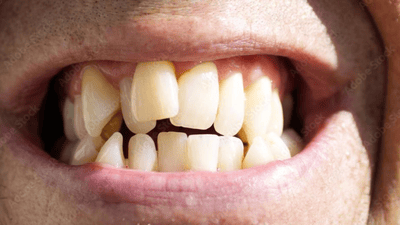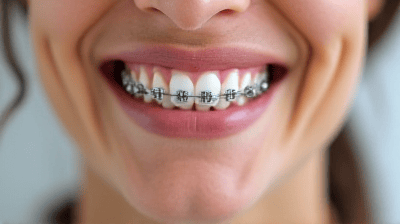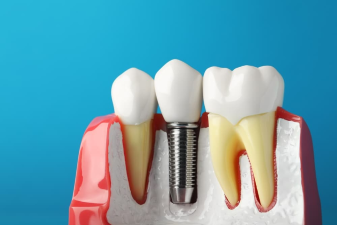Can You Fix Crooked Teeth Without Braces? Alternative Treatment
Crooked teeth can affect not only the aesthetics of your smile but also your oral health. While braces have long been the gold standard for correcting misaligned teeth, many individuals—especially adults and teenagers—wonder if alternative treatments exist that can fix crooked teeth without the need for traditional braces.

Understanding Crooked Teeth
What Causes Crooked Teeth?
Crooked teeth can occur due to various reasons, including:
-
Genetics: Hereditary factors play a significant role in determining the shape and size of your teeth and jaw. If your parents had crooked teeth, you might be predisposed to similar issues.
-
Early Loss of Baby Teeth: Losing baby teeth too early can result in adjacent teeth shifting into the empty space, leading to misalignment.
-
Prolonged Thumb Sucking: Infants and young children who suck their thumbs for extended periods may develop crooked teeth as the thumb can affect dental arch development.
-
Jaw and Facial Structure: Anomalies in jaw development can lead to teeth not aligning correctly. Underbites and overbites are common issues stemming from jaw irregularities.
-
Habits: Certain oral habits, such as mouth breathing, grinding teeth, or clenching, can affect the position of teeth over time.
Why Straighten Crooked Teeth?
Addressing crooked teeth is not merely cosmetic. Misalignment can lead to several health issues, including:
- Difficulty in Cleaning: Crooked teeth can create hard-to-reach areas for brushing and flossing, increasing the risk of cavities and gum disease.
- Jaw Pain and Dysfunction: Misaligned teeth can lead to uneven pressure on the jaw, causing discomfort and issues like temporomandibular joint disorder (TMJ).
- Speech Problems: In some cases, improperly aligned teeth can affect speech clarity and function.
- Self-esteem and Confidence: A beautiful smile plays a vital role in self-esteem, and many people desire straight teeth for aesthetic reasons.
Given these factors, many individuals seek alternative methods to improve their dental alignment without the necessity of braces.
Alternative Treatments for Crooked Teeth
When considering how to fix crooked teeth without braces, several treatment options exist. These alternatives vary in their processes, effectiveness, and suitability for different age groups and severity of misalignment.
1. Clear Aligners
Clear aligners, such as Invisalign, are one of the most popular alternatives to traditional braces. These removable plastic trays gradually shift teeth into better alignment.
How They Work:
- Custom Fit: After an initial consultation, an orthodontist creates a series of custom aligners designed to fit snugly over your teeth.
- Gradual Adjustment: Each aligner is typically worn for about two weeks, progressively moving teeth into the desired position.
- Regular Monitoring: Patients visit their orthodontist every 6 to 8 weeks to monitor progress and receive new sets of aligners.
Benefits:
- Aesthetic Appeal: Clear aligners are virtually invisible, making them a popular choice among adults and teens wanting a discreet treatment option.
- Removability: Patients can remove aligners while eating, drinking, or brushing, leading to easier oral hygiene compared to braces.
- Comfort: Aligners are manufactured without the metal components that can irritate the gums and cheeks.
Considerations:
- Compliance Required: Success depends on the patient wearing the aligners for 20 to 22 hours per day. Noncompliance can lead to treatment delays.
- Not Suitable for Severe Cases: Clear aligners are generally best for mild to moderate misalignment. Severe cases may require alternative treatments.
2. Dental Bonding
Dental bonding is a cosmetic dental procedure that can improve the appearance of teeth by applying a tooth-colored resin to reshape them.
How It Works:
- Resin Application: The dentist applies a pliable resin to the targeted teeth, sculpting it to match the desired shape and alignment.
- Hardening Process: A special light is used to harden the resin and bond it to the tooth surface.
Benefits:
- Quick and Non-Invasive: Dental bonding typically requires only a single visit and can noticeably enhance the appearance of crooked teeth without extensive procedures.
- Cost-Effective: Compared to other cosmetic procedures, bonding is relatively affordable and improves both function and aesthetics.
Considerations:
- Durability: Bonded resin is not as durable as natural enamel, meaning it may chip or stain over time and may require touch-ups.
- Not for All Cases: This method is more suitable for addressing cosmetic issues rather than severe alignment problems.

3. Porcelain Veneers
Porcelain veneers are thin shells of ceramic material custom-made to cover the front surfaces of teeth. They can mask imperfections such as crookedness, discoloration, and gaps.
How They Work:
- Tooth Preparation: A small amount of enamel is often removed to accommodate the thickness of the veneers.
- Custom Fabrication: Impressions of the teeth are made and sent to a dental lab where the veneers are created.
- Placement: Once ready, the veneers are bonded to the teeth permanently.
Benefits:
- Aesthetic Enhancement: Veneers can dramatically improve the appearance of the smile, blending seamlessly with natural teeth.
- Durability: Properly cared for veneers can last for many years without discoloration or wear.
Considerations:
- Cost: Veneers can be more expensive than other options, as they require significant dental artistry and customization.
- Irreversibility: Once enamel is removed, the procedure is irreversible, necessitating a lifelong commitment to veneers or similar treatments.
4. Contouring and Reshaping
Tooth contouring, also known as dental reshaping, involves removing small amounts of tooth enamel to change the shape or length of teeth.
How It Works:
- Custom Plan: The dentist evaluates the teeth and develops a plan to improve alignment through contouring.
- Shape Adjustment: Using specialized tools, the dentist removes small amounts of enamel, shaping the teeth to appear straighter.
Benefits:
- Minimal Discomfort: Contouring is non-invasive and typically does not require anesthesia.
- Immediate Results: Patients can see results immediately after the procedure, improving their smile in one visit.
Considerations:
- Limitations: This method is best for minor corrections and is not suitable for significant misalignment.
- Potential Sensitivity: Some patients may experience temporary sensitivity following the contouring process.
5. Retainers
Retainers are typically used after orthodontic treatment to maintain teeth in their new positions. However, some retainers, specifically clear ones, can be utilized to gently shift teeth back into alignment.
How They Work:
- Custom Design: Similar to clear aligners, retainers are custom-made molds that fit snugly over teeth.
- Continuous Wear: Depending on a dentist’s recommendations, wear times can vary, but consistent use is required for effectiveness.
Benefits:
- Subtle Adjustments: For minor alignment changes, retainers can be an effective and less invasive solution.
- Maintenance of Results: After any orthodontic treatment, retainers help prevent teeth from shifting back to their original positions.
Considerations:
- Limited Impact: Retainers may not be effective for more significant misalignment or established spacing issues.
- Requires Commitment: Continuous wear for prolonged periods is necessary to maintain any adjustments.
6. Palatal Expanders
Palatal expanders are devices used to widen the upper jaw, which can help address crowding and create space for teeth to align better.
How It Works:
- Device Placement: A palatal expander is custom-fitted and attached to the upper molars. A key or expansion instrument is used to widen the expander gradually over time.
- Team Plan: Dentists or orthodontists typically oversee the expansion process, monitoring progress and ensuring proper implementation.
Benefits:
- Addressing Crowding: This method can create necessary space in the dental arch, often reducing the need for further orthodontic treatment.
- Functional Improvement: It can improve bite alignment and allow teeth to erupt more evenly.
Considerations:
- Age Consideration: Palatal expanders are most effective in younger patients whose jaws are still developing. Older patients may have limited success.
- Discomfort: Some patients experience discomfort or pressure during the adjustment process.
Choosing the Right Alternative Treatment
Selecting the appropriate alternative treatment for crooked teeth depends on several factors. Consider the following when evaluating your options:
Severity of Misalignment
- Minor Corrections: For individuals with minor misalignment or cosmetic concerns, options like dental bonding or porcelain veneers may suffice.
- Moderate to Severe Cases: Those with more pronounced alignment issues may benefit from treatments like clear aligners or palatal expanders, emphasizing the need for professional evaluation.
Age and Dental Health
- Teenagers and Young Adults: Younger individuals often have more treatment options due to jaw development. Consulting with an orthodontist can help determine the safest choices.
- Existing Dental Issues: Prior dental conditions like cavities or gum disease should be addressed before pursuing cosmetic procedures.
Lifestyle and Commitment
- Flexibility and Removability: Clear aligners may be appealing to those who prefer treatment that can be removed during meals or important events.
- Time Commitment: Consider how much time and effort you can dedicate to maintaining a treatment regimen. Some options require more consistent use than others.
Cost Considerations
Evaluate the budget for dental treatments before making a decision. Professional options, such as veneers and clear aligners, may involve a larger financial commitment than simpler solutions like dental bonding.
Conclusion
Although traditional braces remain the most effective method for correcting crooked teeth, several alternative treatments exist for those seeking a less conventional approach. From clear aligners and dental bonding to veneers and retainers, various options are available to help individuals achieve a straighter smile without the use of braces.
Choosing the right treatment depends on the severity of misalignment, age, existing dental health, lifestyle, and budget. Consulting with a dental professional ensures you make informed choices that align with your dental goals. Ultimately, a beautiful, aligned smile is within reach through the various treatments available beyond braces.



